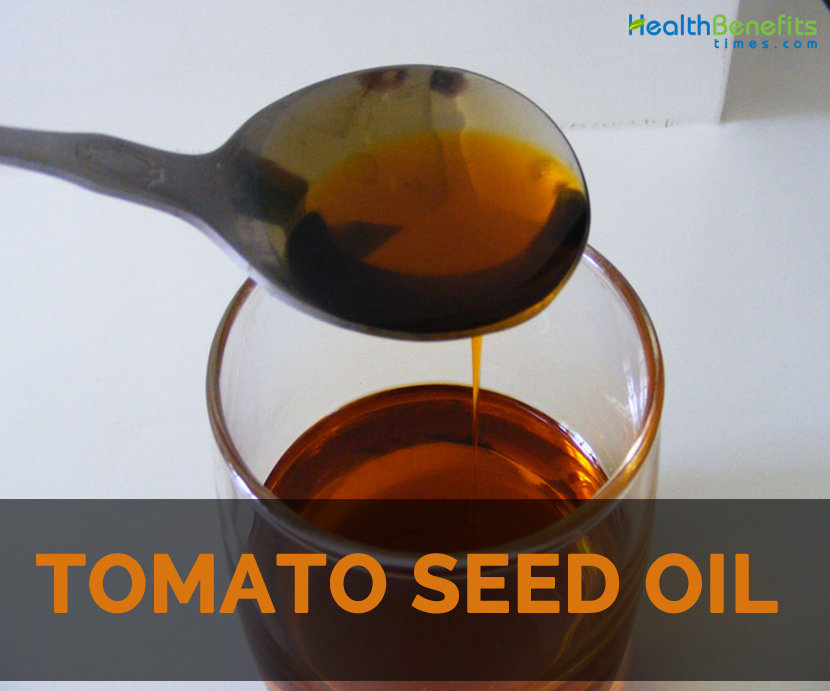| Tomato seed oil Quick Facts | |
|---|---|
| Name: | Tomato seed oil |
| Colors | Pale yellow, brown |
| Calories | 1927 Kcal./cup |
| Major nutrients | Total Fat (622.86%) Vitamin E (55.20%) |
| Health benefits | Eliminate scars, wrinkles, rashes, stretch marks, acne scars |
Nutritional value
One cup of 218 grams of Tomato seed oil is packed with 1927 calories and 218 grams of total lipid fat. The same serving size offers 8.28 mg of Vitamin E, 42.946 g of total saturated fats, 0.436 g of myristic acid, 32.7 g of palmitic acid, 9.592 g of stearic acid, 49.704 g of total monounsaturated fats, 1.09 g of palmitoleic acid, 47.742 g of oleic acid, 115.758 g of total polyunsaturated fats, 110.744 g of linoleic acid, 5.014 g of linolenic acid and 218 mg of phytosterols.
Health Benefits of Tomato seed oil
Tomato seed oil is loaded with various health benefits and treats the skin conditions from mild to severe. Due to its antioxidant properties, it is used for wrinkles, sun damage and age spots. The study also shows that this oil is effective to cure damage and dry hair.
- Its topical use helps to eliminate scars, wrinkles, rashes, stretch marks, acne scars, burns, cracked skin and dry skin.
- It is also used for dry and chapped lips.
- It is also used for psoriasis, eczema, cellulite and other skin problems.
- It promotes growth of hair, increase vitality and repairs split ends.
- It prevents the cancer development and neutralizes free radicals.
- It also prevents flu, infections and colds.
Precautions
- It is better to consult the doctor before ingesting or using topically.
- It should be used in appropriate amounts.
- The people allergic to tomatoes should avoid its use.
How to Eat
- It is used to dress salads.
- It is used for making various dishes.
Other Facts
It is used in preparing non yellowing allkyds for paints, soaps, margarine and salad oils.
Tomato seed oil facts
Tomato seed oil is packed with carotenoid antioxidants such as zeaxanthin, lutein and lycopene along with phytosterols, polyunsaturated fatty acids and minerals. It is used in hair care, skin care and lip care products. The presence of Vitamin E and Carotenoid provides antioxidants that are essential for the healthy and glowing skin. It absorbs well in skin and as light viscosity. It also possesses good stability as well as shelf life. It is believed to possess natural powers that help to block UV rays and prevents from the sun damage. It possesses healing properties that is helpful for the skin ailments such as eczema, psoriasis and acne.
| Name | Tomato seed oil |
|---|---|
| Smoking point | 260 degrees |
| Color | Pale yellow, brown |
| Odor | Strong |
| Flavor | Mild |
| Major Nutritions | Total Fat (lipid) 218 g (622.86%) Vitamin E (alpha-tocopherol) 8.28 mg (55.20%) |
| Calories in 1 cup (218 gm) | 1927 Kcal. |
| Traditional uses |
|
| Precautions |
|
| How to Eat |
|
| Other Facts |
|
References:
http://www.101herbs.com/blog/tomato-seed-oil.html
https://en.wikipedia.org/wiki/Tomato_seed_oil


